How much does a heated clothes airer cost to run? Is it still an affordable solution to help dry laundry?
Heated clothes airers are an efficient way to dry your laundry, especially when it's still cold – but how much money do they really cost?
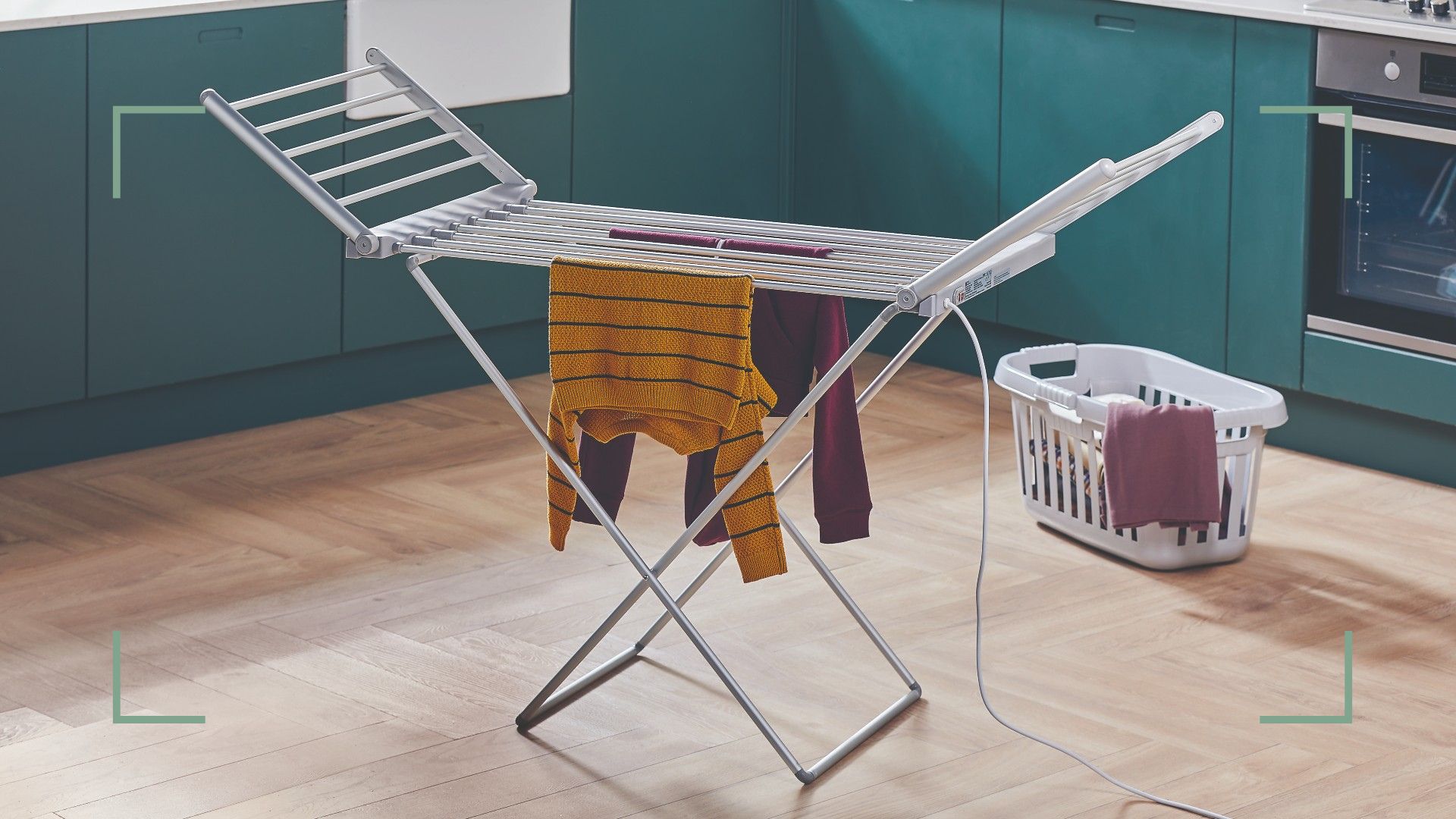

Katie Sims
Heated clothes airers can prove incredibly useful during colder months, providing a speedier way to dry clothes when ordinary airers just won’t cut it. But just how much does a heated clothes airer cost to run?
Are heated clothes airers actually a more cost-efficient way of drying clothes indoors; or are you better off using an ordinary airer and cranking the heating up, or even using your tumble dryer?
The best heated clothes airers work quickly and efficiently to dry your clothes using either heated rails or hot air ventilation. For many people, this is far preferable to leaving your clothes to dry on a regular airer – a process which can often take a whole day, if not days in the cold weather, particularly if you live in a poorly ventilated property.
Heated airers, on the other hand, should dry at least the majority of your clothes in just a couple of hours, if not less. In this sense, heated airers are far superior to non-heated airers – but what about the cost of running them? Are they expensive to use, given that they use electricity? And how do they actually stack up – price-wise when compared to other drying methods, such as a tumble dryer? We spoke to experts to weigh up the costs.
How much does it cost to run a heated clothes airer?
Using a heated clothes airer is inevitably going to be pricier than a non-heated airer (which clearly costs nothing bar the original purchase price), but are heated clothes airers expensive to run?
Energy expert, Dan Moore at PriceYourJob explains that running costs will vary depending on the airer you have. "There are many different models of heated clothes airers on the market, so the cost to run yours will depend on its power, as well as its size. Some also come with covers to encapsulate the clothes, which reduces the drying time, and so the cost to run it."
To work out the answer to 'how much does a heated clothes airer cost to run', you'll need to know the specific wattage of your heated airer. You'll also need to know the current energy price cap, which as of 1st January 2025, is 24.86 pence per kWh. This will be in place until the 31st March.
Sign up for the woman&home newsletter
Sign up to our free daily email for the latest royal and entertainment news, interesting opinion, expert advice on styling and beauty trends, and no-nonsense guides to the health and wellness questions you want answered.
Just like working out the cost to run a dehumidifier, we take the wattage of the device and divide this by 100 to get the kWh. So, a 300W heated airer uses 0.3 kWh. We then multiply the kWh by the current energy price cap (25p for ease) to get the hourly running costs.
This means that a 300W heated clothes airer costs 7.5p per hour to run.
How much does it cost to run a heated clothes airer for 1 hour?
With today's energy price cap, example heated clothes airers would cost the following to run per hour:
- A 220W heated airer would cost roughly 5.5p to run per hour.
- A 300W heated airer would cost roughly 7.5p to run per hour.
- A 1000W heated airer would cost roughly 25p to run per hour.
"Most heated airers use either 220W or 300W to run," Nicholas Auckland, heating and energy expert at Trade Radiators explains. "The 220W airers are more likely to be smaller, while the 300W heated airers are more likely to be bigger. There are also 1000W heated airers available, and these are usually in the form of "drying pods" that work much quicker." The best pod models are ideal for drying bed sheets fast without a dryer.
As these figures show, heated clothes airers are generally considered cheap to run, but you'll also need to consider how long you're using the airer for too. Using a 300W airer - such as this 4-Tier Extendable Heated Clothes Airer, £149.99 from Robert Dyas - for eight hours would cost roughly 60p, which isn't much at all to dry a batch of clothes.
While the cost of running a 1000W heated airer per hour is significantly higher, you wouldn't need to use this for as long as the lower-wattage models, thanks to the faster drying times. Three hours would be enough time to dry a laundry load on a 1000W airer, which would wind up costing about 75p.
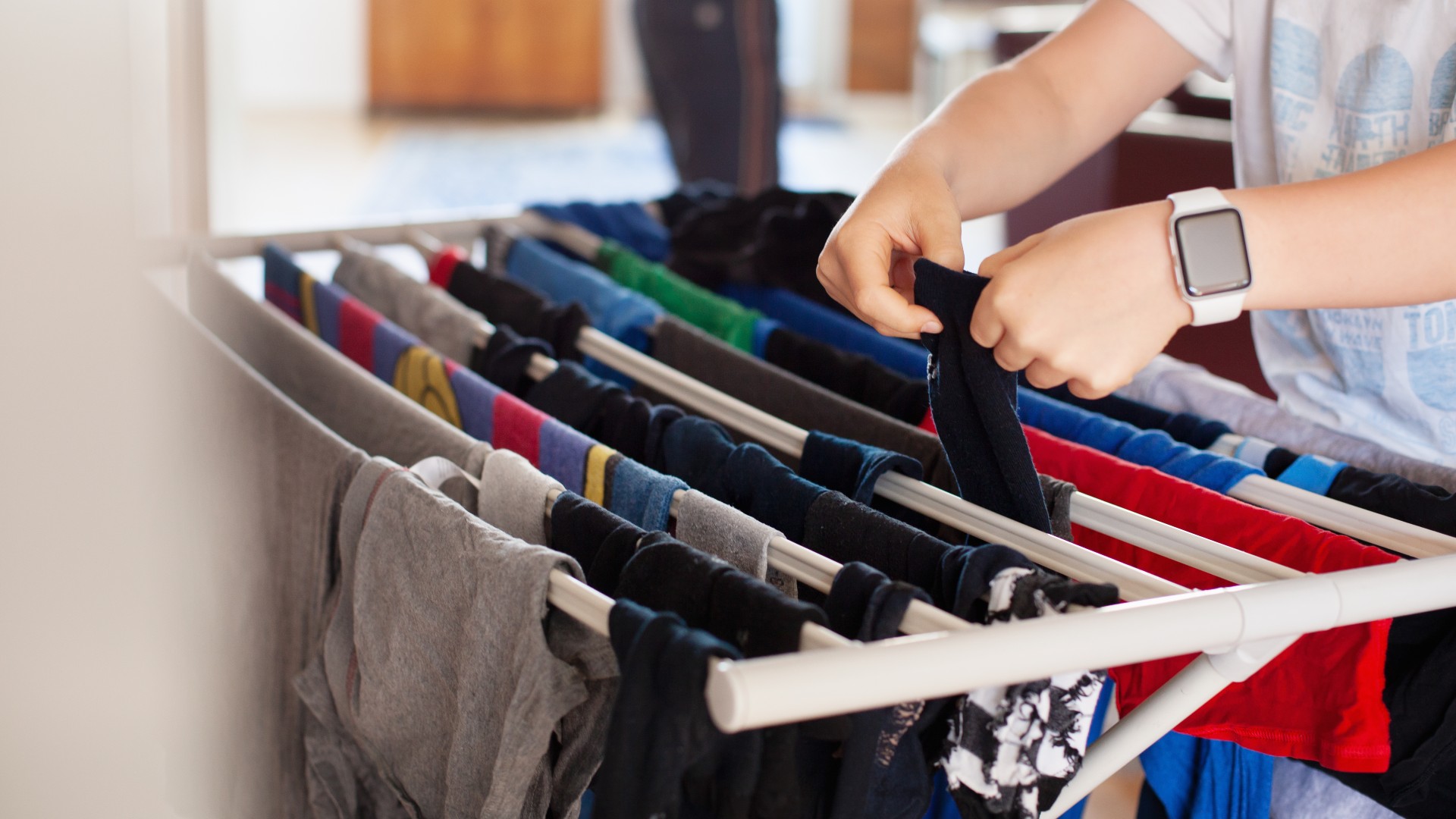
It's also worth considering the upfront cost of your heated clothes airer too. While there are lots of smaller, affordable options which start from around £40, some more premium and larger models can cost up to £200.
As mentioned, 1000W models come at a higher price point, but they end up being slightly cheaper to run because they don't need to be switched on for as long.

Nicholas Auckland is a heating and energy expert with almost 20 years of experience in the industry, as well as the Managing Director of Trade Radiators. Nicholas is dedicated to finding the best heating solutions for every need, as well as optimising energy usage, reducing costs and helping others live with lower costing energy bills.
Which is cheaper to run: a dehumidifier or a heated airer?
The best dehumidifiers work in tandem with heated clothes airers. Dehumidifiers are good for drying clothes because they remove excess moisture from the air, allowing water from the clothes to evaporate quicker. Together, they're the dream combination for drying laundry indoors.
But which is cheaper to run, and can you use a dehumidifier as a substitute for a heated clothes airer altogether?
Well, when it comes to drying laundry, a heated clothes airer is the cheaper option, because it will dry your clothes much quicker than a dehumidifier. "A dehumidifier works by taking moisture out of the air, and therefore excess moisture out of hanging clothes, but at a very slow pace," Nicholas explains.
"On the other hand, a heated airer provides direct heat to the clothes, drying them much quicker. While a dehumidifier might be cheaper to run per hour, it will likely need to be turned on for longer than a heated airer in order to fully dry clothes, meaning that it works out costing more than a heated airer in the end."
If you take a 200W dehumidifier that can remove 12L of moisture, and have it turned on for 12 hours, it would cost 59.64p to run in total. However, if you have a 220W heated airer on for 8 hours, it would cost roughly 44p. This works out at being almost 16p cheaper.
Our top recommendation is to use a dehumidifier alongside a heated clothes airer, as aside from speeding up drying times, this will help prevent the build-up of condensation too - which can lead to damp and mould issues down the line.
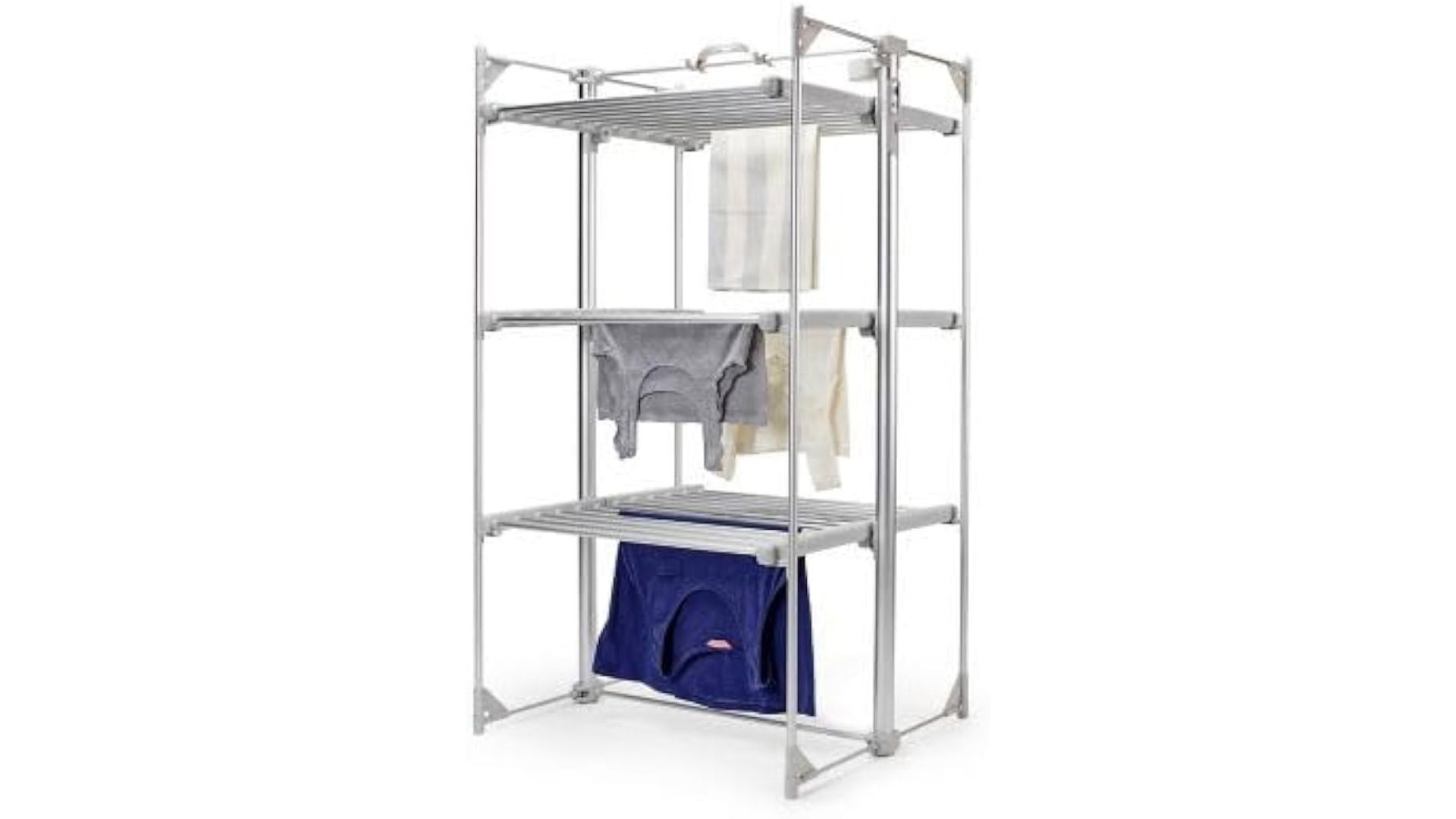
We highly recommend this heated airer. The tall tower takes up minimal floor space, and it can still dry 15 kg of laundry. It's expensive, but if you want to save a little, check out our Lakeland voucher codes.
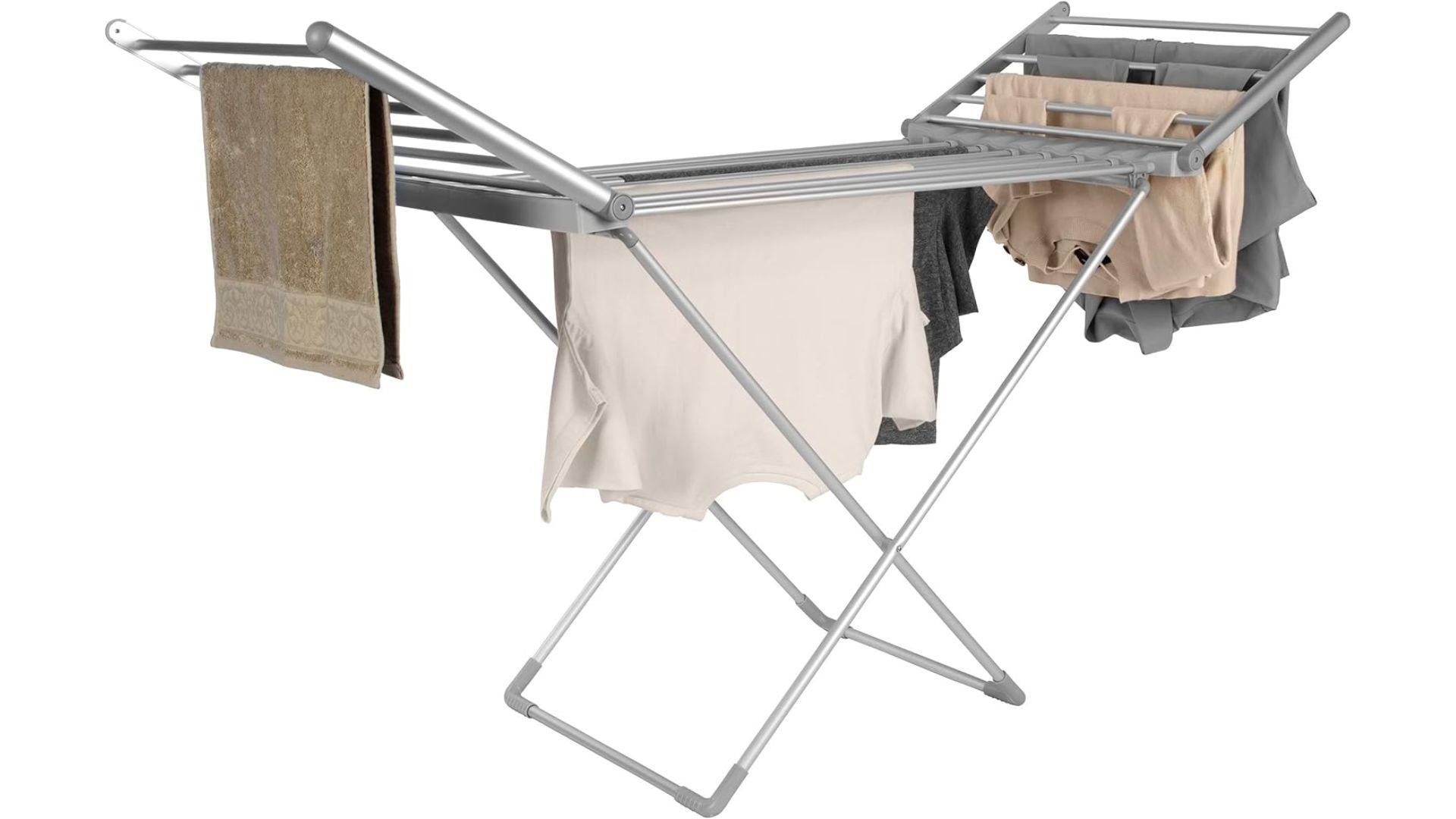
This compact Beldray model comes up in the fiercely competitive winged airers category. And yet, the grippy feet, easy set-up, and speedy drying times make this one of the best options out there, even though it's also one of the cheapest. It folds up to be just 8cm deep, so any home could store it.
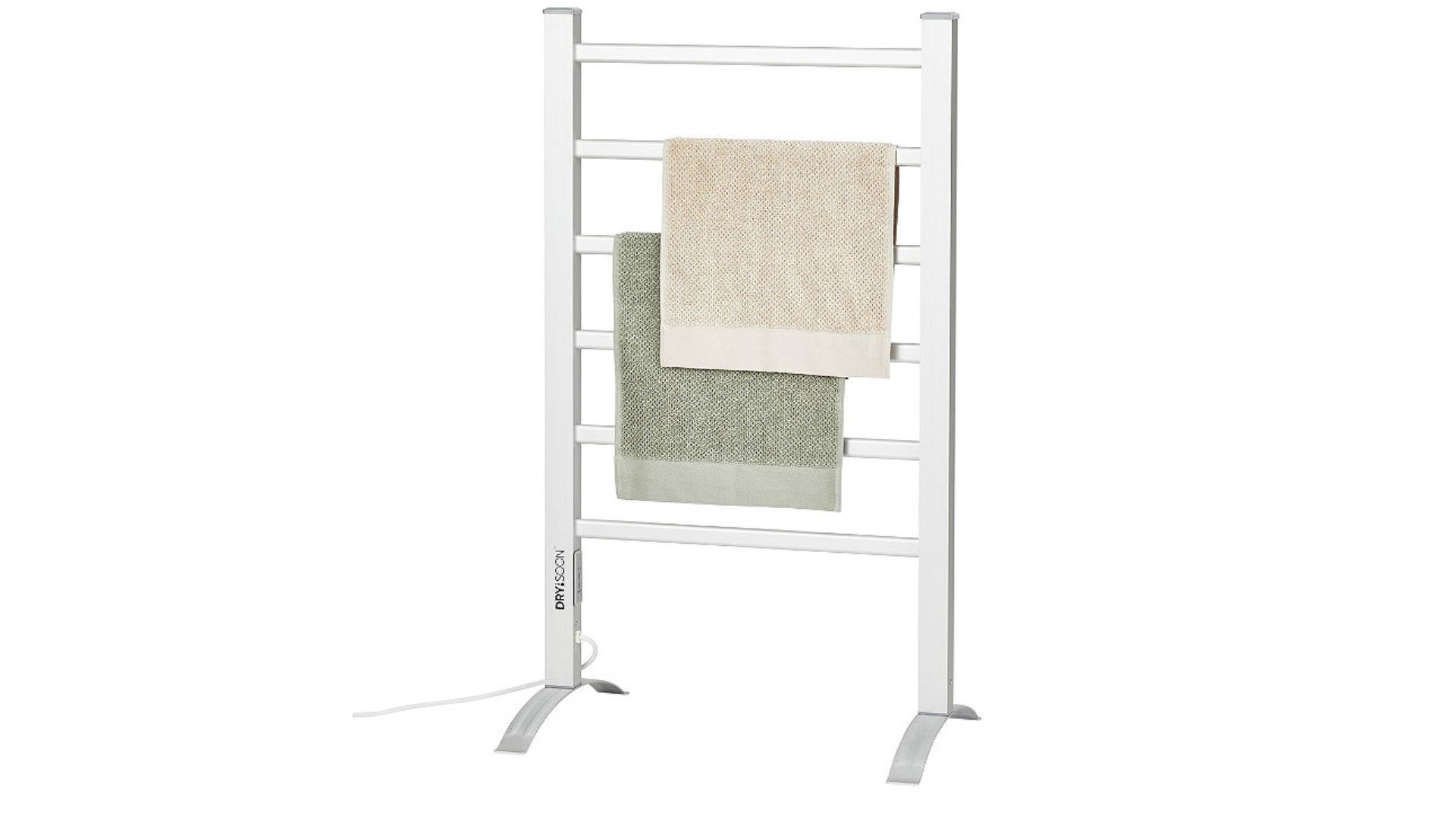
Ideal for small space living. If your bathroom radiator is struggling or you just want to dry a few items, this self-standing model is a brilliant option. It's from the trusty Dry:Soon and I loved having it to hand on a day-to-day basis. It won't take over from your tumble dryer or your washing line, but it's a good option.
How can I cut the cost of running a heated airer?
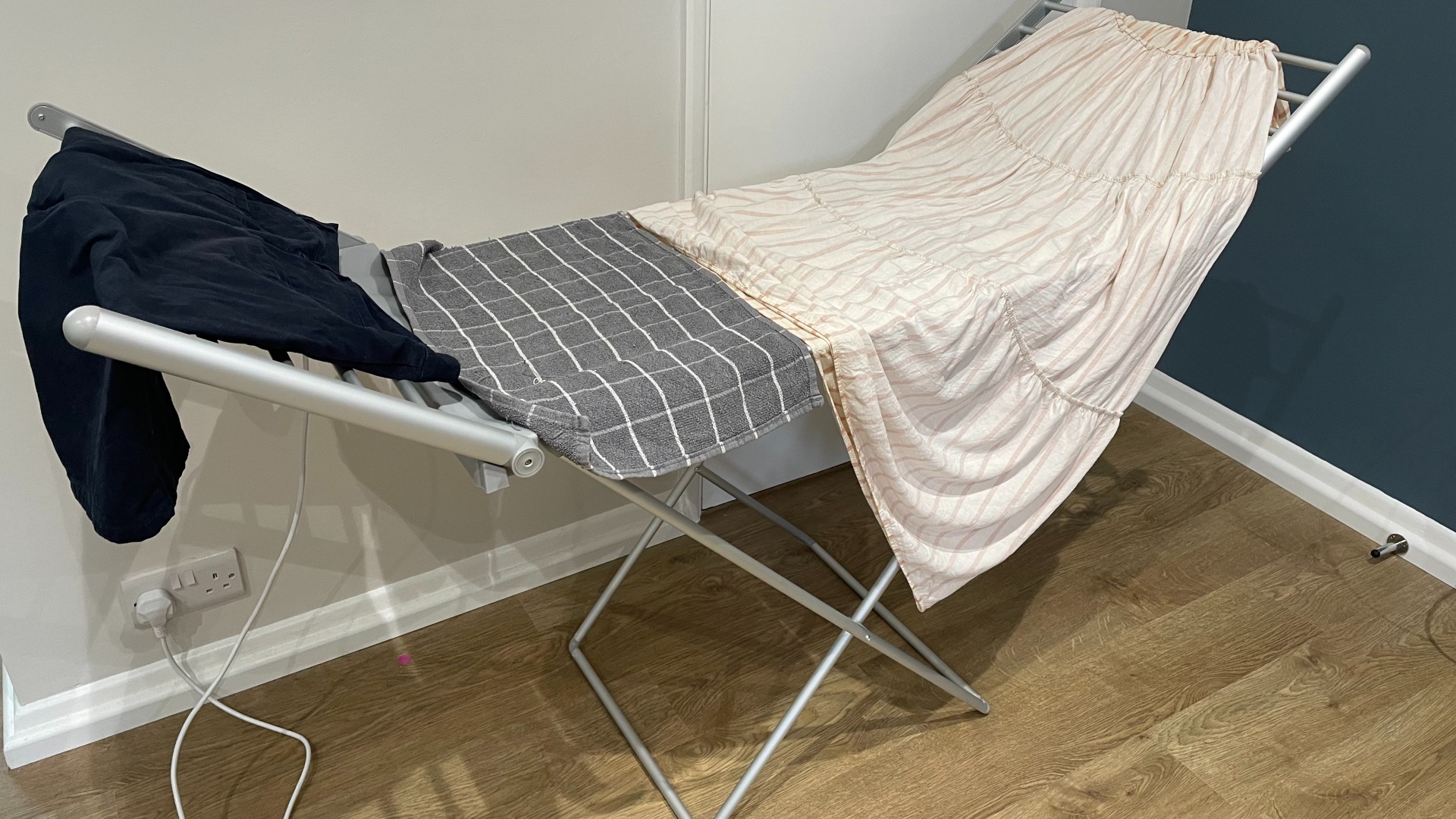
To keep the cost of running your heated clothes airer as low as possible, you'll want to avoid the common heated clothes airer mistakes, as these reduce the appliance's efficiency.
Firstly, it's really important to avoid overloading the airer. While it's tempting to whack as many clothes on there as possible, this is going to lengthen the drying time considerably, meaning you'll need to leave the airer running for longer. Remember to switch the airer off as soon as the clothes are dry as well (many of us are guilty for leaving the appliance switched on for longer than necessary).
You should also make sure that you are buying an airer that is large enough for your household laundry load; it won’t be very useful to buy one that holds just a couple of t-shirts and some underwear if you have a family of five at home.
It's also worth investing in a cover for your heated clothes airer if yours didn't come with one. "Typically, a heated clothes airer with a cover will dry wet laundry much faster than one without a cover," energy expert Dan Moore explains.
FAQ
Do heated airers use a lot of electricity?
Given how little they cost to use, heated clothes airers certainly aren’t a big electricity drain, though it does depend on the model you have.
"Heated clothes airers are generally designed to be energy efficient," Jon Bonnar, managing director at Cotswold Energy Group (CEG) says. "Although the amount of electricity used does depend on a model’s wattage and the duration of its operation; compared to some other appliances, such as tumble dryers and radiators, heated clothes airers tend to use much less electricity."
Dan reiterates that some models do use less electricity than others. "The smaller the airer, and the lower the wattage, the less electricity they will use," he explains.
So if excessive electricity usage is a concern for you, it might be helpful to consider using a smaller clothes airer with a lower wattage. However, there are drawbacks to this that you may want to consider. Dan points out, "Bear in mind that lower wattage and less drying space means you cannot dry as much laundry, and it will take longer than a larger more powerful heated clothes airer."
With this in mind, it may be wise to consider whether a larger airer does indeed make sense for your home and family life, especially if there are lots of you living in your household. Although a bigger model will technically use more electricity on a per-hour basis, it should dry your laundry faster and more thoroughly, which in turn will allow you to have it on for less time.
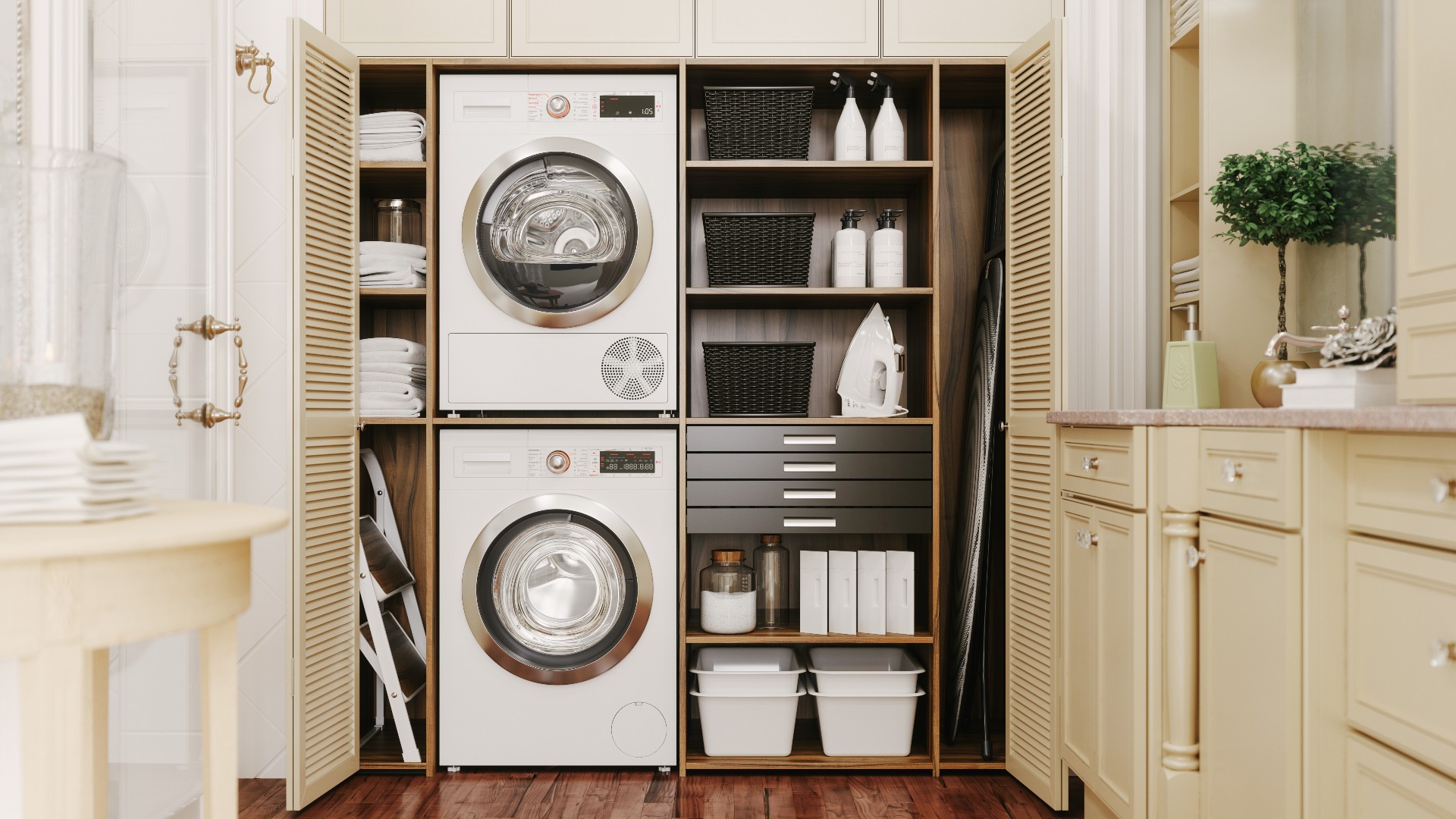
Are heated airers cheaper to run than tumble dryers?
There's almost no question about which of these appliances is more affordable, according to Dan. "Tumble dryers are one of the most energy-intensive and therefore expensive electrical household appliances to run, so it is undeniably cheaper to use a heated clothes airer," he says.
However, it’s worth remembering that tumble dryers will typically dry your clothes much faster than a heated clothes airer, especially if you utilise expert tips to speed up drying times to save money and energy. The right choice for you and your home might depend on how quickly you need to get through your laundry load.
"If a typical tumble dryer uses 2500W of energy, this works out at 62p per hour to use," energy expert Nicholas explains. "Depending on how long the cycle is, and how many loads of washing you're doing, this could be expensive."
A two hour tumble dryer cycle would cost £1.24, and a four cycle would cost £2.48. Comparing this to a 220W heated airer, the airer is 56.5p cheaper to run than the tumble dryer.
Evidently, a heated clothes airer is much cheaper to use than a tumble dryer, even when in use for an entire day. However, it’s worth remembering that tumble dryers will typically dry your clothes much faster than a heated clothes airer, so the right choice for you and your home might depend on how quickly you need to get through your laundry load.
If you're happy and able to pay the extra, you may consider the extra cost of a tumble dryer cycle to be worth it, as there's no doubt that this appliance can dry your items in practically half the time.
Are heated airers cheaper than radiators?
You might feel compelled to hang your wet washing on your radiators to get your clothes dry – after all, it’s a win-win, right? Your clothes will dry, and you can keep your house nice and warm, too. Unfortunately, it’s not all that simple.
Drying your clothes on radiators might not be that great an idea. "Radiators aren’t designed to dry clothes," William Hobbs, Energy Expert at MyJobQuote explains. "As heat rises it pushes the moisture from your clothes upwards, where it’s likely to cling to cold surfaces such as windows and exterior walls. This causes condensation and dampness." The last thing you want is to then deal with cleaning mould off walls as a result of drying clothes.
And that’s not all. Dan says, "Drying clothes directly on radiators is also not energy efficient. The damp clothes restrict the heat being emitted into the room, making the boiler work harder to heat the space too."

If you do want to use the heat from your radiators to dry clothes, it’s better instead to simply have your clothes drying in a room where your central heating is on, William suggests. "If you’re using central heating to dry your clothes, it’s best to hang your clothes on a standard airer rather than directly on your radiator, as you will otherwise block the heat."
When drying indoors, consider trying the expert-recommended plants that help with condensation by removing excess moisture, in the same way that dehumidifiers work.
But which option is cheaper – drying your clothes via your central heating and radiators, or on heated clothes airers? Once again, it appears that heated clothes airers win out, both in terms of affordability, and when it comes to drying your clothes safely and effectively.
"If you’re putting the heating on purely to dry your clothes, this could be costing you £5.96 per hour, as gas boilers typically use 24kW of power to run up to ten radiators, as an example," William says. And, as we know, heated clothes airers on the other hand can be as affordable as just 5-25p an hour to run – so there’s a clear winner in this debate.

Are heated airers a good idea?
If you’re debating using a heated clothes airer for your laundry-drying needs, the experts tend to agree that it can be a fantastic purchase if you struggle to get your items dry. Especially in the winter and particularly if you live in a damp or poorly ventilated property.
Not only are they a much more affordable alternative to drying your clothes in a tumble dryer, but they'll also certainly get your washing dry much faster than if you used a non-heated clothes airer. They can also be relatively inexpensive to buy, and will prevent your clothes from getting that damp smell, as they'll dry that much quicker.
However, there are a few things you need to bear in mind to ensure your heated clothes airer runs most effectively. "You do need to rotate clothes on heated airers, to ensure they dry evenly," William advises.
"You should also make sure there’s a good flow of air in your home when drying clothes indoors to prevent damp and mould. Opening windows or vents will ensure you’re not trapping excess moisture inside your home, and will prevent condensation on windows, for example."
Amy Hunt is an experienced digital journalist specialising in homes, interiors and hobbies. She began her career working as the features assistant at woman&home magazine, before moving over to the digital side of the brand where she eventually became the Lifestyle Editor up until January 2022. Amy won the Digital Journalist of the Year award at the AOP Awards in 2019 for her work on womanandhome.com.
- Katie SimsContributor
-
 Vegetables to plant in April: 8 crops to start now for a delicious harvest later in the year
Vegetables to plant in April: 8 crops to start now for a delicious harvest later in the yearDiscover which vegetables to plant in April, and top tips for growing success
By Holly Crossley Published
-
 Weekly horoscope: 2 astrologers' predictions for 14th - 20th April 2025
Weekly horoscope: 2 astrologers' predictions for 14th - 20th April 2025Read your weekly horoscope from Sally Trotman and Penny Thornton who reveal what this week holds for every star sign on love, family, career, and more
By Penny Thornton Published